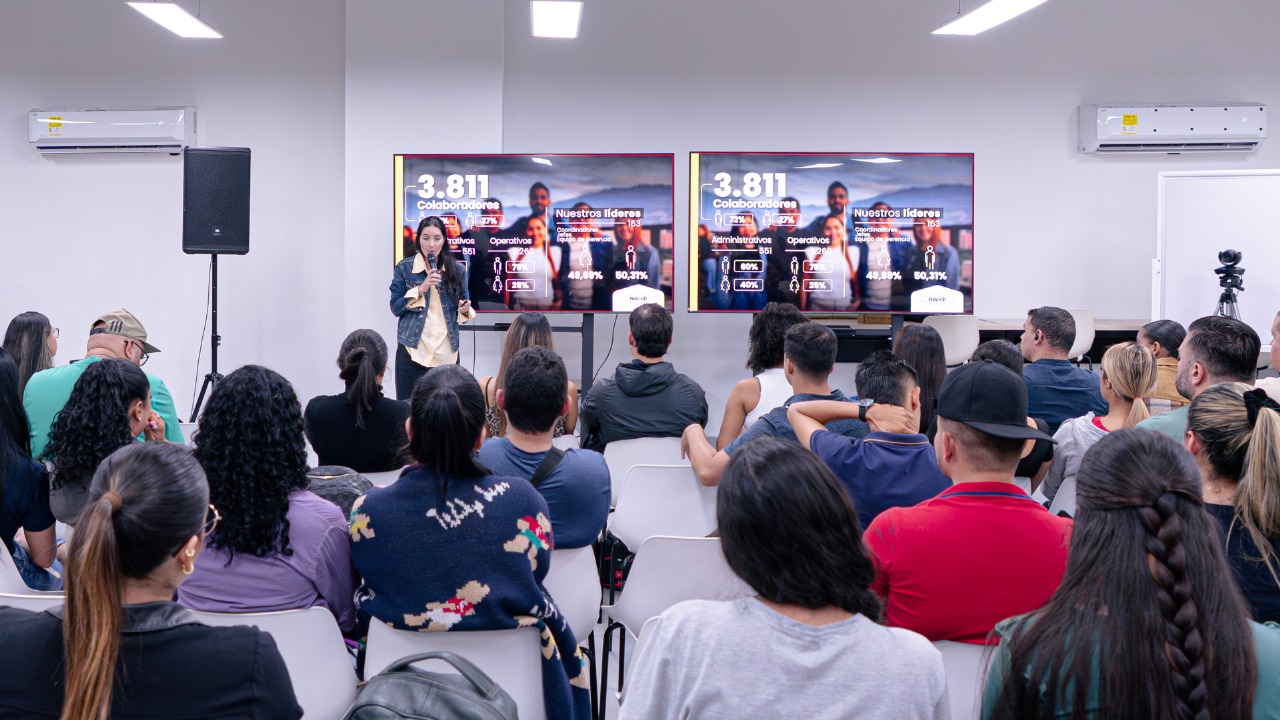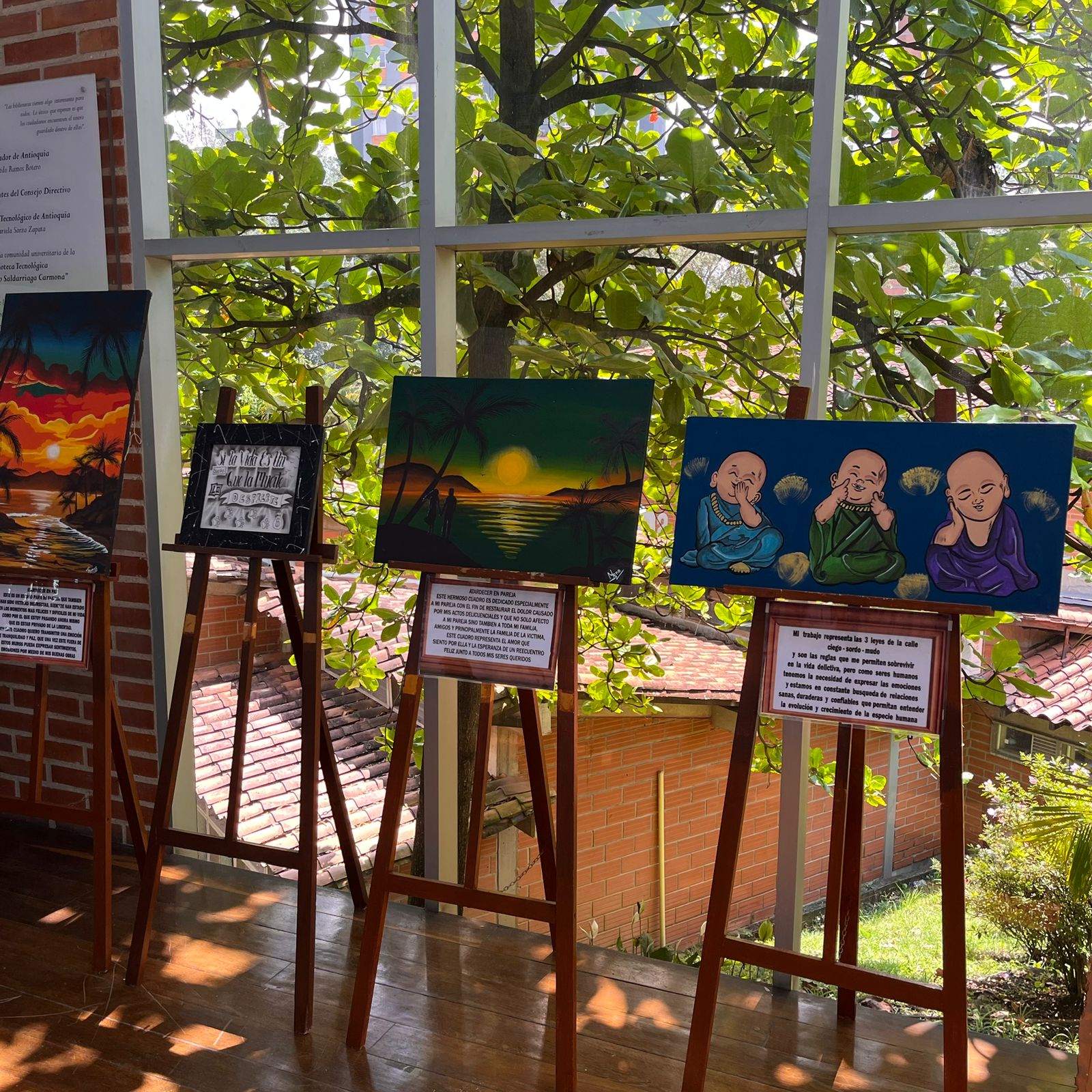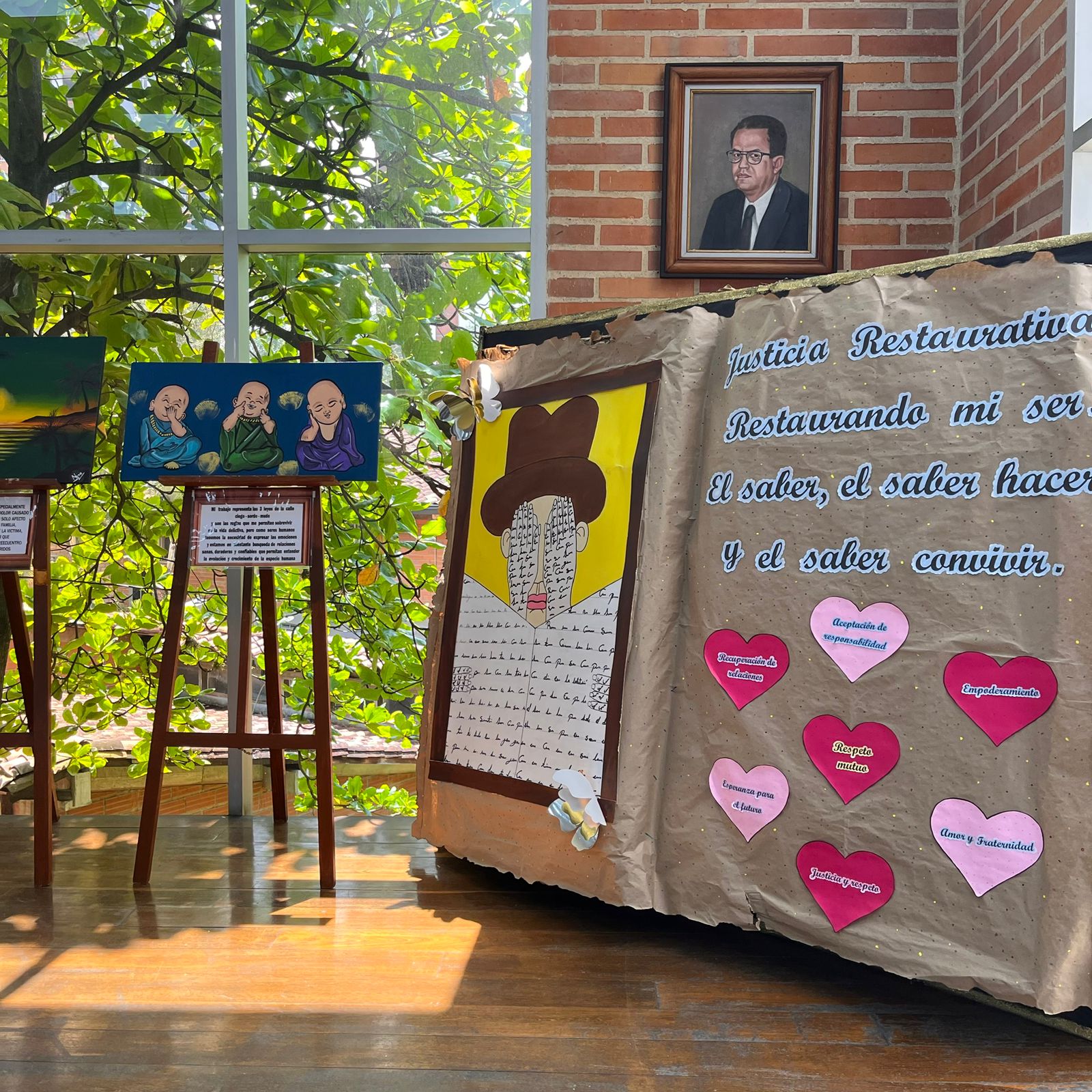La Facultad de Educación y Ciencias Sociales del TdeA, a través de sus programas de Psicología, Trabajo Social y las licenciaturas de Literatura y Lengua Castellana e Infantil, en cooperación con el Centro de Atención al Joven Carlos Lleras Restrepo, efectuó la exposición “Colores para la libertad”.
“A través de la pintura los jóvenes sitúan sus emociones, experiencias y aspiraciones creando piezas que reflejan su conducción hacia la búsqueda de libertad interior y redención. La exposición es fruto de un proceso de intervención educativa y terapéutica en el que participó un equipo interdisciplinario de nuestra institución. Es un trabajo donde ellos encuentran en el arte un medio de expresión de sentidos y significados personales”, detalló Juan Fernando Álvarez Quintero, docente del programa de Psicología del TdeA.
La muestra artística, que tuvo el respaldo de Extensión Académica de la institución, fue de carácter itinerante. La primera estación de la exposición fue la biblioteca Humberto Saldarriaga Carmona del campus de Robledo entre el 21 y 23 de octubre. Luego, la selección de obras de jóvenes privados de la libertad hizo escala, los días 24 y 29 del mismo mes, en las sedes alternas de Copacabana e Itagüí, respectivamente.
“Con la exposición queremos visibilizar el trabajo y las capacidades creativas de los jóvenes privados de la libertad, desafiando los paradigmas y estigmas que rodean a esta población. Al presentar sus obras en un entorno académico generamos una oportunidad para que la sociedad vea a estos jóvenes desde una perspectiva más humana, los comprenda y se aproxime a ellos. A través de la educación y el arte consideramos que sí es posible construir caminos de una verdadera reintegración social”, destacó el docente.
El Centro de Atención al Joven Carlos Lleras Restrepo está dedicado a la rehabilitación y resocialización de adolescentes en conflicto con la norma dentro del marco del Sistema de Responsabilidad Penal para Adolescentes. La institución es dirigida y administrada por la congregación de religiosos Terciarios Capuchinos.
“Esta iniciativa promueve la autoexploración, el desarrollo de habilidades emocionales y la creatividad ayudando a los jóvenes a encontrar nuevos significados en sus vidas y a cultivar una visión de futuro más positiva en un entorno que ha reducido su autonomía. Este trabajo interinstitucional, basado en acciones restaurativas mutuas, nos obliga como personas, comunidad académica y sociedad a que todos, de alguna manera, hacemos parte de la reparación de los daños que hemos causado como colectivo social”, concluyó Álvarez Quintero
Mediante la articulación interinstitucional, de la que hace parte el TdeA, se espera compartir esta metodología y sus resultados a otras instituciones a cargo del Sistema de Responsabilidad Penal. Se quiere así generar acciones de relevancia y dignidad, a partir de las expresiones artísticas, entre las personas inmersas en procesos de reintegración social, tanto jóvenes como adultos.
![]()
"Colors for Freedom", the Transformative Power of Art
The School of Education and Social Sciences of TdeA, through its programs of Psychology, Social Work and the degrees of Literature and Spanish and Children's Language, in cooperation with the Carlos Lleras Restrepo Youth Care Center, held the exhibition "Colors for Freedom."
"Through painting, young people situate their emotions, experiences and aspirations creating pieces that reflect their drive towards the search for inner freedom and redemption. The exhibition is the result of a process of educational and therapeutic intervention in which an interdisciplinary team from our institution participated. It is a work where they find in art a means of expression of personal senses and meanings," explained Juan Fernando Álvarez Quintero, professor of the Psychology program of the TdeA.
The artistic exhibition, which had the support of the Academic Extension of the institution, was of an itinerant nature. The first stop of the exhibition was the Humberto Saldarriaga Carmona library at the Robledo campus between October 21 and 23. Then, the selection of works by young people deprived of liberty will be on the 24th and 29th of the same month, at the alternate campuses of Copacabana and Itagüí, respectively.
"With the exhibition we want to make visible the work and creative capacities of young people deprived of liberty, challenging the paradigms and stigmas that surround this population. By presenting their works in an academic environment, we generate an opportunity for society to see these young people from a more human perspective, understand them and approach them. Through education and art, we believe that it is possible to build paths of true social reintegration," said the professor.
The Centro de Atención al Joven Carlos Lleras Restrepo (Carlos Lleras Restrepo Youth Care Center) is dedicated to the rehabilitation and resocialization of adolescents in conflict with the law within the framework of the Criminal Responsibility System for Adolescents. The institution is directed and administered by the congregation of Capuchin Tertiary religious.
"This initiative promotes self-exploration, the development of emotional skills and creativity by helping young people to find new meanings in their lives and to cultivate a more positive vision of the future in an environment that has reduced their autonomy. This inter-institutional work, based on mutual restorative actions, obliges us as individuals, academic community and society to ensure that we all, in some way, are part of the reparation of the damage we have caused as a social collective," concluded Álvarez Quintero
Through inter-institutional coordination, of which the TdeA is part, it is expected to share this methodology and its results with other institutions in charge of the Criminal Responsibility System. The aim is to generate actions of relevance and dignity, based on artistic expressions, among people immersed in processes of social reintegration, both young people and adults.






